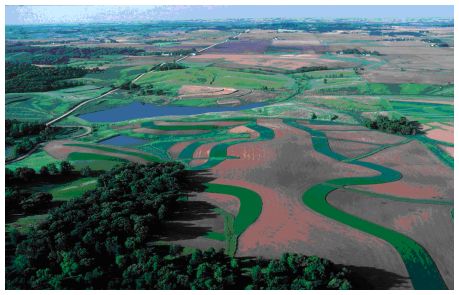Introduction to Watersheds

Everyone lives in a watershed. A watershed is the land area that contributes water to a location, usually a stream, pond, lake or river. Everything that we do on the surface of our watershed impacts the water quality of our streams, wetlands, ponds, lakes and rivers. What happens in one locality affects other downstream areas.
Protecting our water resources requires looking at water quality issues from a watershed perspective. Watershed planning and management consists of coordinated activities aimed at controlling, enhancing or restoring watershed functions.
Runoff pollution is the primary source of water quality problems in our lakes, ponds and streams. It can come from many different sources in a watershed. Water quality protection practices, or best management practices (BMPs), are systems, activities and structures that are constructed or practiced to prevent runoff pollution.
Impaired lakes, streams and rivers are a concern throughout the state of Nebraska. Explore how the University of Nebraska-Lincoln conducts research and Extension programming to address watershed issues in several focused watersheds in the state.
Information presented within the watershed section of this Water Web site has been reviewed by University of Nebraska–Lincoln Watershed Management Team members Steve Tonn, Thomas Franti, Charlie Wortmann and David Shelton.
Sign up for updates from UNL Water
